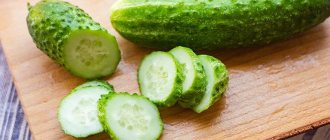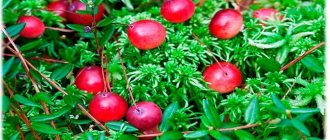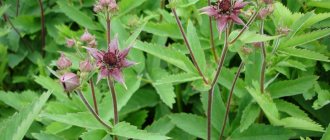Peanuts are one of the most popular legumes. It has been grown in Latin and Central America for a long time. This delicious nut was happily eaten by the Aztecs, Incas and other Indian tribes that inhabited the American continent. The plant was brought to Europe by the Spanish conquerors. And thanks to the Portuguese, he came to Africa. Nowadays, this important agricultural crop is cultivated on an industrial scale in countries with warm and humid climates: in Asia, Africa, and the United States of America.
The plant conquered the planet not by accident. In addition to its excellent taste, this fruit is very healthy. It is able to quickly satisfy hunger and compensate for the lack of vital minerals and vitamins in the body.
Who called peanuts groundnuts and how?
The botanical name of this legume is Arachis hypogea. But people called it “peanut”. And not only the residents of Russia were so deeply mistaken. This phrase appeared in our speech as a borrowed phrase. That is, the delusion went far beyond the boundaries of one country and turned out to be international.
The fact is that this is not a nut at all, but an annual herb, the final formation of the fruits of which occurs in the soil. The maturation process usually lasts from 4 to 5 months. The stems tend to rise, and the pods first hang down and then gradually make their way underground. During harvest, they literally have to be dug up. This is how the first part of the common name appeared.
The wrinkled pods and the fruits themselves are in many ways similar to beans. But it was confused with a “nut” because it has all the properties that characterize hazelnuts, pistachios and other fruits consisting of a shell and an edible kernel.
Content:
- What peanuts look like Composition and beneficial properties How Peanuts became popular as food How else peanuts are used How they are collected and prepared Contraindications
Peanuts are not a plant, but a complete misunderstanding. Judge for yourself, everyone calls it a nut, but by definition it is not one. Turns out it's a legume. No legumes ripen underground, but peanuts do, compromising the legume family as a whole. Not a single ripe fruit of a legume plant can be chewed without pre-processing, but peanuts can be eaten raw, and even delicious. This surprisingly willful plant, which does not want to be squeezed into the framework of classifications, was appreciated by the ancient South American peoples, who cultivated it long before Columbus discovered America. At the sites of their settlements, household utensils in the shape of peanuts were found, and so that no one would doubt that it was peanuts that inspired them with their shapes, they painted these dishes, depicting their favorite fruit. That’s why they called South America the birthplace of peanuts.
What are the benefits of peanuts?
In Latin America, the kernels are rarely eaten raw. There they are considered edible only after roasting. They are used to make peanut milk, butter and flour, as well as protein shakes. Nowadays it is an important component of many desserts, cakes, pastries, as well as unusual sauces and gourmet snacks. The beneficial properties of peanuts have already been appreciated by fans of healthy eating around the world. People who want to lose weight have noticed that it promotes rapid and natural weight loss. But the list of obvious advantages does not end there.
Promotes weight loss
Scientists from all over the world have conducted many detailed studies to find out how eating peanuts affects weight. And now their verdict is final and irrevocable: although this product is high in calories and saturated with fat, this does not become an obstacle to preventing the appearance of extra pounds. The kernels are rich in proteins, which quickly relieves hunger. And the insoluble dietary fiber in the composition helps gradual natural weight loss.
A group of women took part in one of the organized experiments. For six months, they replaced the usual sources of fat with groundnuts. The result was not long in coming - each of the participants lost approximately 3 kilograms. During another study, experiment participants added 89 g of kernels to their usual daily menu for 2 months. The final weighing confirmed that none of the subjects gained weight. Another large-scale experiment was carried out by Spanish scientists. The experiment lasted 2 years and 4 months, and its results are very optimistic. As it turns out, people who eat peanuts at least 2 times a week reduce their chances of gaining weight by a third.
But do not rush to purchase this product in huge quantities. It is worth considering that kernels should not be consumed in too large portions. After all, no one has canceled the calorie content, so it is important not to overdo it.
Provides cardiovascular protection
According to the results of many scientific experiments, people who regularly consume this nut suffer less from cardiovascular diseases. And American researchers say: if it appears on the menu several times every 7 days, the risk of ischemia is reduced by more than a third.
Good for the brain
These legumes improve the constant movement of blood through the vessels of the circulatory system of the head, which prevents possible strokes and other disorders in the functioning of the brain. This positive effect is ensured by the presence of a valuable component in the kernels - natural antioxidants flavonoids, which have the ability to neutralize free radicals.
Relieves “bad” cholesterol
Peanut fans' bad cholesterol goes away forever. This happens thanks to the plant sterols and phytosterols it contains, which cleanse the body and have strong anti-inflammatory properties. To find evidence of this effect, scientists conducted a study in which they included it in the diet of women during the reproductive aging period after menopause. After a few weeks, it turned out that the cholesterol level in the body of each of the experiment participants had decreased significantly.
Prevents the formation of gallstones
Gallbladder disorders are a fairly common disease on the planet. According to some estimates, about a quarter of the population suffers from this unpleasant disease. According to scientists from many countries, peanuts should be consumed to prevent the formation of gallstones. The result of adding it to the diet is amazing - the likelihood of getting sick decreases by 4 times. The explanation for this effect is that it, as we have already found out, reduces cholesterol levels. And gallstones, as you know, are the same densely hardened cholesterol accumulated in the gallbladder.
Helps prevent cancer
Scientists from the Chinese province of Taiwan studied for 10 years whether eating peanuts could help prevent malignant tumors in the colon. 24 thousand people agreed to participate in the experiment: 12 thousand men and 12 thousand women. The result was encouraging. As it turned out, if you eat 2 servings of this product for 7 days, the risk of intestinal cancer decreases in both women and men: among the fair sex by 58%, among the stronger half of humanity – by 27%.
Prevents the occurrence of Alzheimer's disease
American researchers from Chicago conducted an experiment involving more than 3 thousand people over 65 years of age. Amazingly, people who consumed 20 mg of niacin daily had a 70% lower risk of being diagnosed with Alzheimer's disease in old age. Please note that the daily requirement of this important vitamin is contained in a small handful of fruits.
Pesticides
Because mold is a major problem in peanuts, non-organic farmers use a lot of pesticides and fungicides when planting the nuts.
At the same time, groundnuts have permeable pods, through which chemicals harmful to the body penetrate into the kernel.
Therefore, you need to take into account that when you buy a cheap, low-quality nut and use it frequently, toxic substances will accumulate in the body, causing various disruptions in the functioning of systems and organs.
Are peanuts bad for you? They may be if you consume too much. While eating one or two ounces of peanuts a day is good for a healthy heart and body, eating too many can be harmful to your health.
Features of the chemical composition
These legumes are healthy and nutritious due to their unique content of proteins, fats, carbohydrates, vitamins, minerals and antioxidants. Among the most valuable components are magnesium, phosphorus, potassium, copper, iron, nicotinic and oleic acids.
Nutritious protein
Almost one third of peanuts consists of proteins. Eating it is a great way to add nutritious protein to your diet.
Healthy fats
The plant belongs to the oilseed crops. The high concentration of fats allows the fruits to be used to produce peanut butter. It contains about 50% fat. Mainly, these are mono- and polyunsaturated acids, which belong to simple lipids. These are low molecular weight organic substances that are easily digestible.
Low Carb Content
These legumes contain 13-16% carbohydrates. This amazing feature, combined with a high concentration of proteins, fats and fiber, means that carbohydrates are digested, absorbed and processed more slowly. Consequently, blood sugar levels increase slightly and gradually. This is an ideal food for people suffering from diabetes.
Vitamins and microelements
The kernels contain a whole complex of vitamins and microelements that improve health:
Biotin accelerates growth and normalizes the functioning of muscle fibers;
Copper is a mineral for the heart;
Niacin prevents cardiovascular diseases;
· folic acid normalizes the functioning of the immune system;
· Vitamin E protects cell membranes, proteins, fats and DNA, stopping the destructive effects of free radicals;
Vitamin B1 helps the body produce energy and is necessary for the normal functioning of the nervous system, heart and muscles;
· phosphorus is necessary for energy production, the functions of the muscular and nervous systems, as well as for bone growth;
· magnesium has a beneficial effect on bone growth; normalizes heart rate, reduces blood pressure.
Natural antioxidants
Scientists have identified many active plant substances and antioxidants in the nut. Their content in this representative of the legume family is no less than in many fruits. Interestingly, most of the useful components are concentrated in the dark shell, which is not customary to eat.
But the kernel is also rich in antioxidants, including:
· p-coumaric acid;
· resveratrol;
isoflavones;
· phytic acid;
· phytosterols.
Reduced hunger
Research data shows that consumption of peanuts and peanut butter improved satiety and satisfied consumers better than carbohydrate snacks such as rice cakes in equal amounts.
Effects of food attributes on hunger and food intake. Kirkmeyer SV, Mattes RD. Int J Obes Relat Metab Disord. 2000 Sep; 24(9):1167-75.
Another study found that consuming peanuts reduced appetite due to its satiating effect. New evidence also suggests that the type of healthy monounsaturated fat in peanuts may stimulate a hormone that helps you feel satisfied after eating a meal. The lipid messenger OEA links dietary fat intake to satiety. Schwartz GJ, Fu J, Astarita G, Li X, Gaetani S, Campolongo P, Cuomo V, Piomelli D. Cell Metab. 2008 Oct; 8(4):281-288.
Who shouldn't eat peanuts?
If consumed incorrectly, kernels can bring not only benefits, but also harm. Raw product may disrupt the digestive system. It is strictly not recommended for allergy sufferers, as well as people suffering from diseases of the gastrointestinal tract, gout, arthrosis, arthritis and other joint diseases.
Danger for allergy sufferers
Peanuts are one of the most common food allergens. Approximately 1% of the world's population suffers from individual intolerance to this product. The allergic reactions caused often occur with serious complications. Pain and vomiting, as well as swelling and difficult breathing are possible. Very severe cases can be fatal. Young children should not be allowed to eat it either.
Risk of Aflatoxin Poisoning
Some batches may be contaminated with aflatoxin, a deadly substance produced by mold spores. If you eat such products, there is a risk of serious poisoning. The main symptoms of poisoning are loss of appetite, yellowing of the eyes and severe pain in the liver, accompanied by headache, loss of coordination, lethargy and weakness. Due to severe pathology, cirrhosis or a malignant liver tumor occurs.
The risk of aflatoxin contamination increases if the crop is stored in a hot, humid room. Most often this concerns shipments coming from tropical countries.
Tricky Antinutrients
Antinutrients included in the chemical composition of this legume interfere with the absorption of nutrients in the body. The main blame lies with phytic acid, the amount of which ranges from 0.2 to 4.5%. Phytic acid, entering the human body, interferes with the absorption of iron, zinc and calcium. With a monotonous diet, this can even lead to mineral deficiency. A balanced diet may be the solution. In this case, phytic acid will not cause serious health problems.
How to choose quality peanuts?
Peanuts can be purchased in markets, shops and supermarkets throughout the year. There are many types of this popular plant. But the most common varieties in our territory are “Virginia”, “Valencia”, “Spanish” and “Runner”. The nut is sold in shell, peeled, salted, sweetened, and also in the form of milk, butter and paste. Which one is the most useful? We recommend purchasing raw, unpeeled kernels. Please note: the pods should be creamy, whole, uniform in color and smell good.
It is better to place purchased products in a cool, dry place. It will be quite usable for several months. Cleaned kernels must be packed in tightly closed, airtight containers. They should be put in the refrigerator, otherwise they will become bitter.











